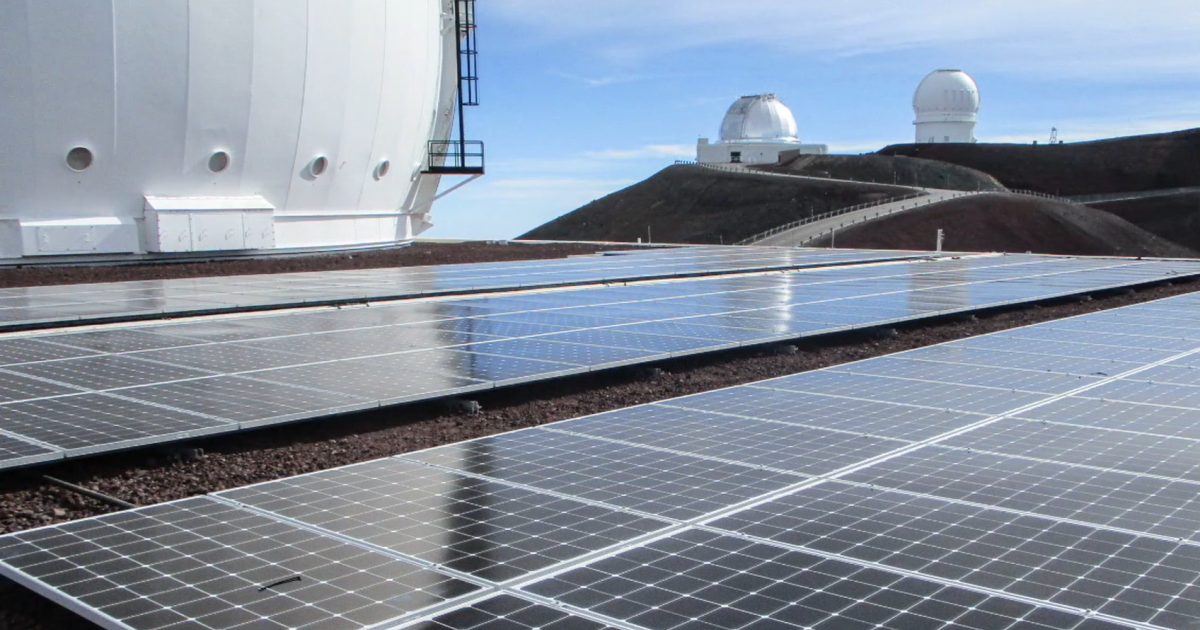Hawaii’s W. M. Keck Observatory recently unveiled what is claimed to be the world’s largest high-altitude commercial solar system installation.
The Keck Observatory telescopes on Maunakea in Hawaii, Keck I and II, are also among the world’s largest optical and infrared telescopes, situated at an elevation of 4,145 meters near the summit of Mauna Kea. The Observatory’s mission is to “advance the frontiers of astronomy and share our discoveries, inspiring the imagination of all”.
As part of the Observatory’s effort to rein in emissions associated with its operation, a 133-kW solar power system consisting of 332 solar panels has been installed, which will supply equivalent to approximately 10-15% of the observatory’s electricity needs and avoid 183 tonnes of carbon emissions annually.
“Incorporating renewable energy generators such as solar PV is important to Keck’s core values of stewardship and service,” said project lead and infrastructure specialist at Keck Observatory, Mark Devenot. “It will reduce our reliance on electricity derived mainly from fossil fuels, which underscores our efforts to be good stewards of the planet.”
High Altitude = Higher Solar Electricity Output
The Observatory team states the system will generate 259.1 MWh of electricity annually, which seems pretty high for a system of that size.
Just as a comparison, a 133kW solar system installed in a generally sunny low-lying location such as Adelaide can be expected to generate somewhere around 200 megawatt-hours per year.
The reason given for the higher estimated output at Maunakea:
“At high altitude, the panels will catch more photons and produce more energy than at sea-level locations,” states the Observatory. “This is because sunlight atop Mauna Kea doesn’t have to travel through as much of the Earth’s atmosphere where the photons could be absorbed by something else.”
The thinner atmosphere of Mauna Kea is also one of the reasons it’s a great place to conduct astronomy.
Installation Challenges
It’s not clear how long installation including site preparation work took, but it was over a period of more than 18 months. This was due to various challenges, including the havoc caused by COVID-19, some snow days and a powerful winter storm in 2019.
The project also would have been quite a tough one physically for workers as at that altitude there’s around 40% less oxygen than at sea level.
Another challenge was the ballasted roof on which the solar panels are installed. A ballasted roof system is one where the roof membrane isn’t anchored or adhered to the decking material – so there was no structural framework to anchor the system to. A unique racking system had to be designed for the project capable of withstanding the high winds experienced at the site. The following video compiled before COVID-19 started messing with the project shows some glimpses of the preparation, racking system used and other aspects.
As well as supplying clean energy for the observatory’s operations, the installation will provide valuable data on solar panel performance in a thinner atmosphere with a high UV index and under higher than average winds, which could be of benefit in future for other solar installation projects at high altitudes.


 RSS - Posts
RSS - Posts



Speak Your Mind